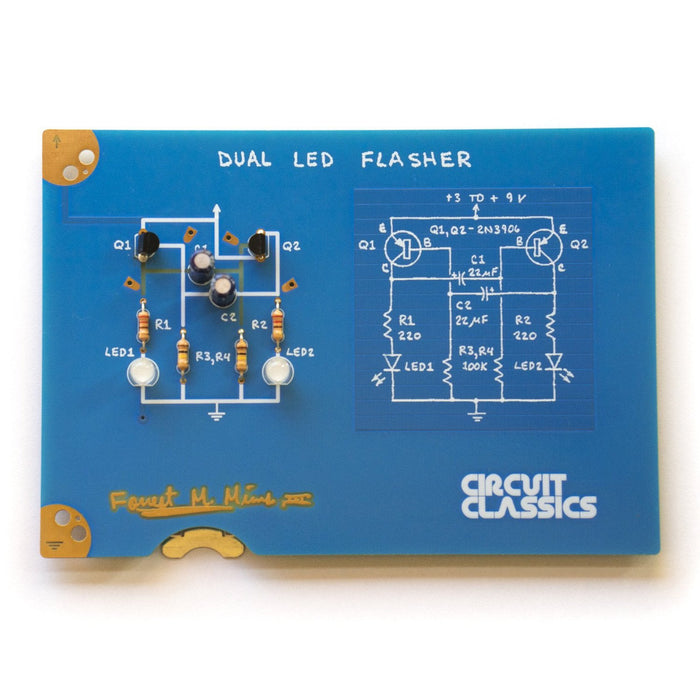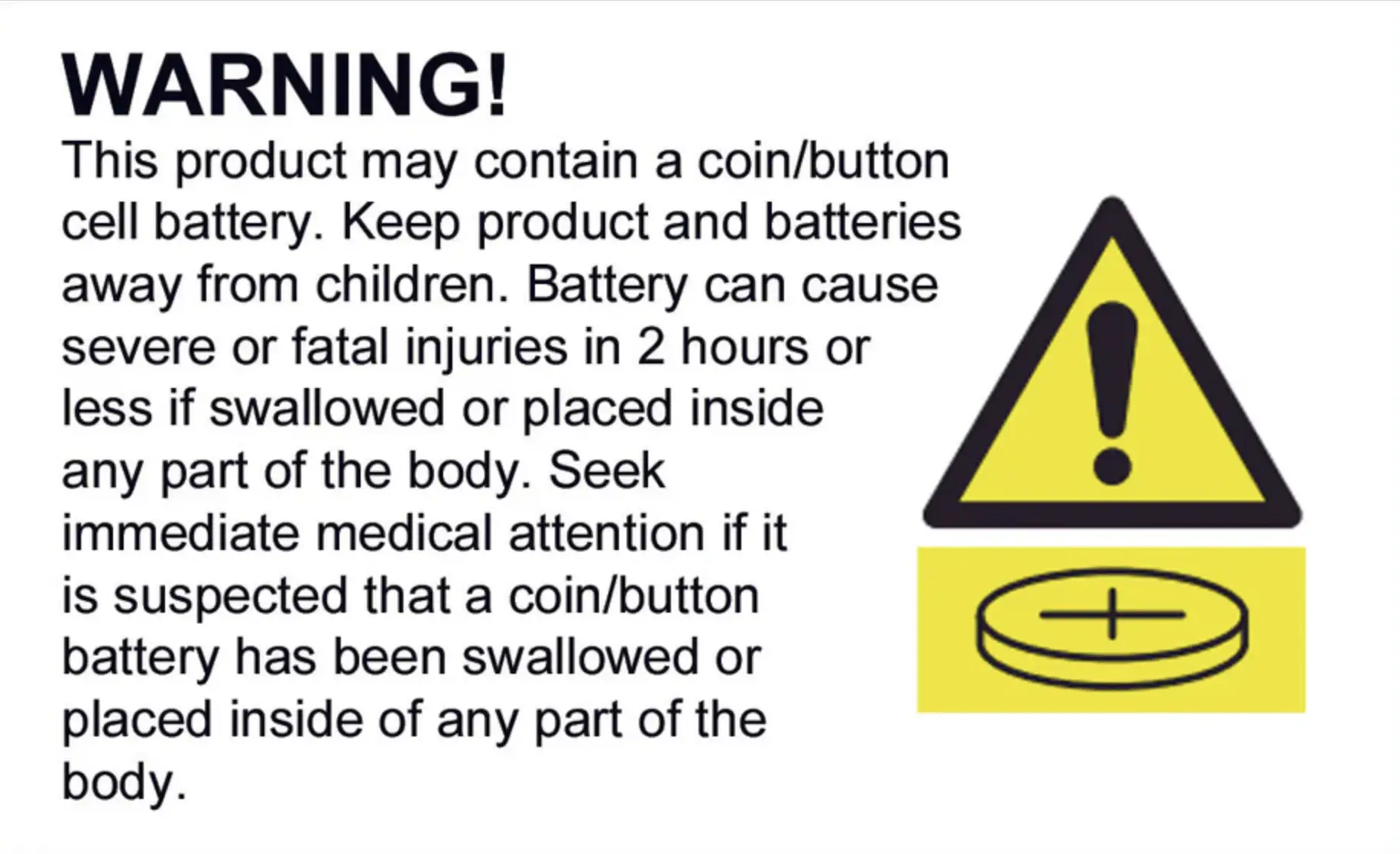
Circuit Classics: Dual LED Flasher
This circuit is a rewarding first project — with just nine components you can get the satisfying effect of making LEDs light up and blink. The circuit’s functionality is charmingly complex despite its simplicity. Understanding how it works will provide a taste of the analog side of electronics, and is a fun puzzle!
About This Project
Forrest M. Mims III is a trusted name in the electronics world for good reason: his charming and engaging texts have drawn millions of people into the world of electronics for the first time. I have brought three of those hand-drawn circuits projects to life by creating an exquisitely designed series of finely crafted and highly detailed boards. These are the Circuit Classics. They make a great gift for a first-time learner, an expert tinkerer, or even just as a fun conversation piece for your desk.
— Star Simpson
In the kit
- 1 x Dual LED Flasher PCB
- 1 x Alcohol Prep Pad
- 1 x Battery Clip
- 2 x 2N3906 Transistor
- 2 x 100kΩ Resistor
- 2 x 220Ω Resistor
- 2 x White LED
- 2 x 22μF Electrolytic Capacitor
- 1 x Black Alligator Clip
- 1 x Red Alligator Clip
- 4 x Rubber Foot
- 1 x Wooden Stand
Required Tools
You'll need a couple of additional tools and materials in order to put this kit together: a soldering iron, and solder. You may like a "third hands" for holding the board while you working on it- or, if you like, you can use the wooden stand to hold the board while you solder. Batteries are not included in the kit, and you can choose to use the alligator clips to hook up a battery or power supply of your choosing, or you can assemble the SMT Battery Clip to the reverse side, in which case you'll want to supply either a 3V 2032 coin cell battery or two 3V 2016s (to form a 6V stack).
Assembly Steps
Many circuit builders find it helpful to assemble the components from shortest to tallest on the board. Start by inserting the four resistors, R1, R2, R3, and R4. Bend the leads outward to hold them in place while you solder them. You may consider using the wooden stand to hold the board at a pleasing angle while you solder. After this, insert the two transistors, and finally the remaining two capacitors and both LEDs. Then turn the PCB over, and as a final step, attach by soldering the SMT battery clip into place. If you like, you may also choose to clean the solder flux a bit using the alcohol pad, and you can assemble the included rubber feet either onto the circuit board (to give it a bit of grip laying flat) or onto the bottom of the wooden stand for long-term display.
Testing
Attach a battery or power supply to this circuit and see the lights turn on and blink!
The Circuit Classics: Dual LED Flasher appears in the following collections:

